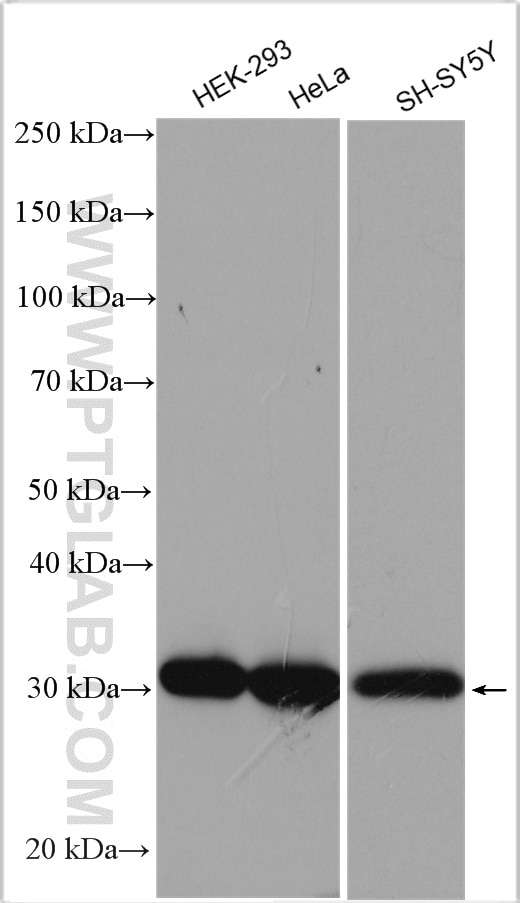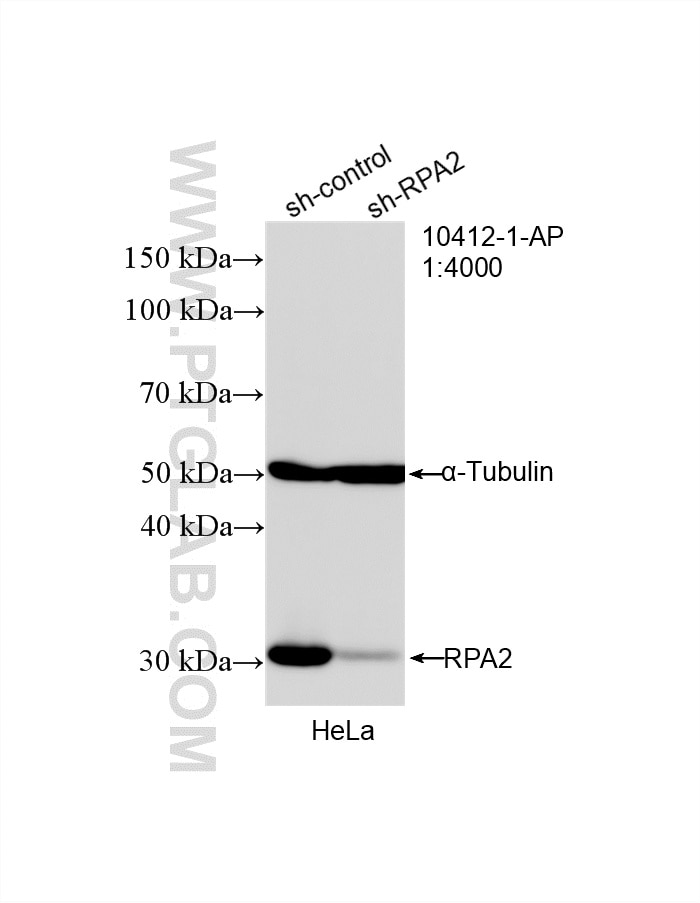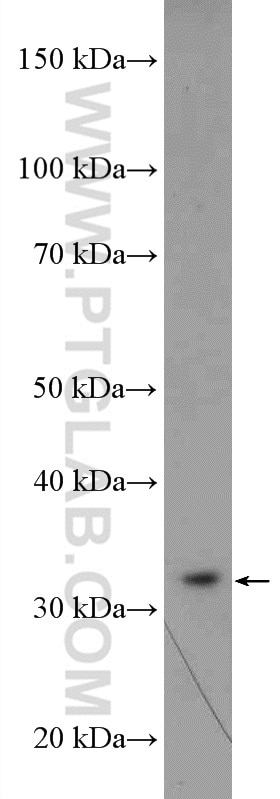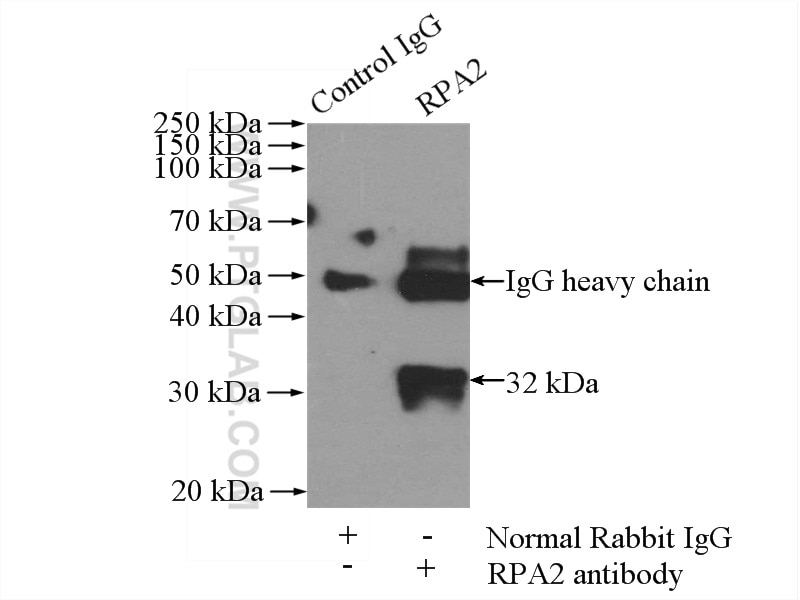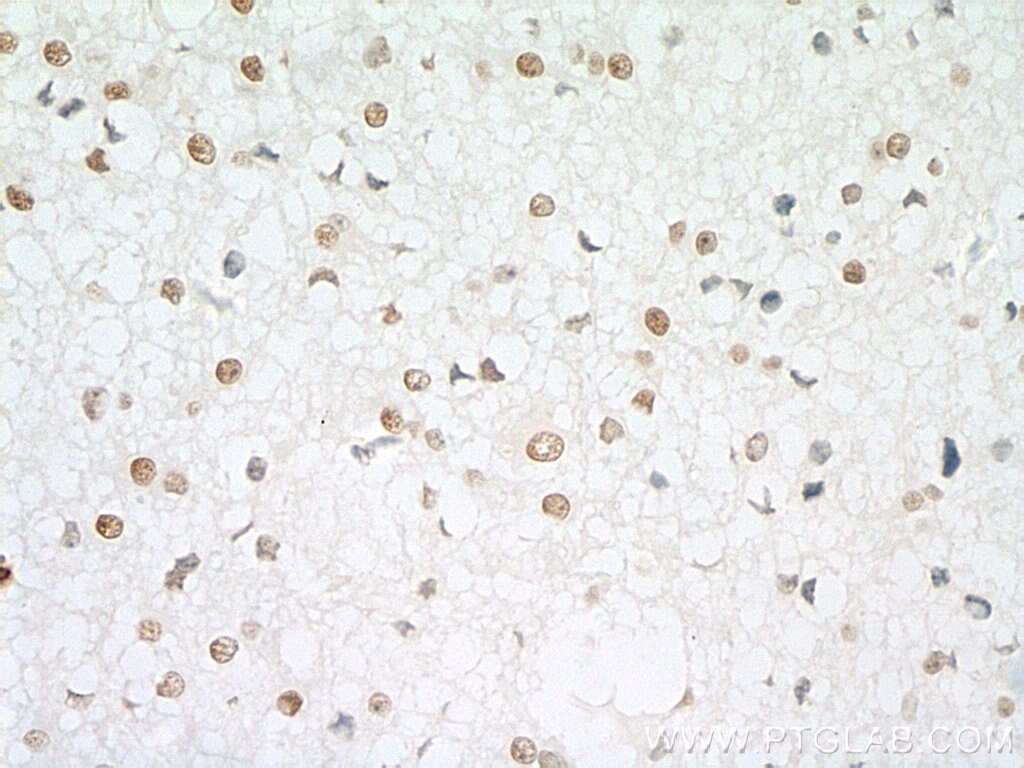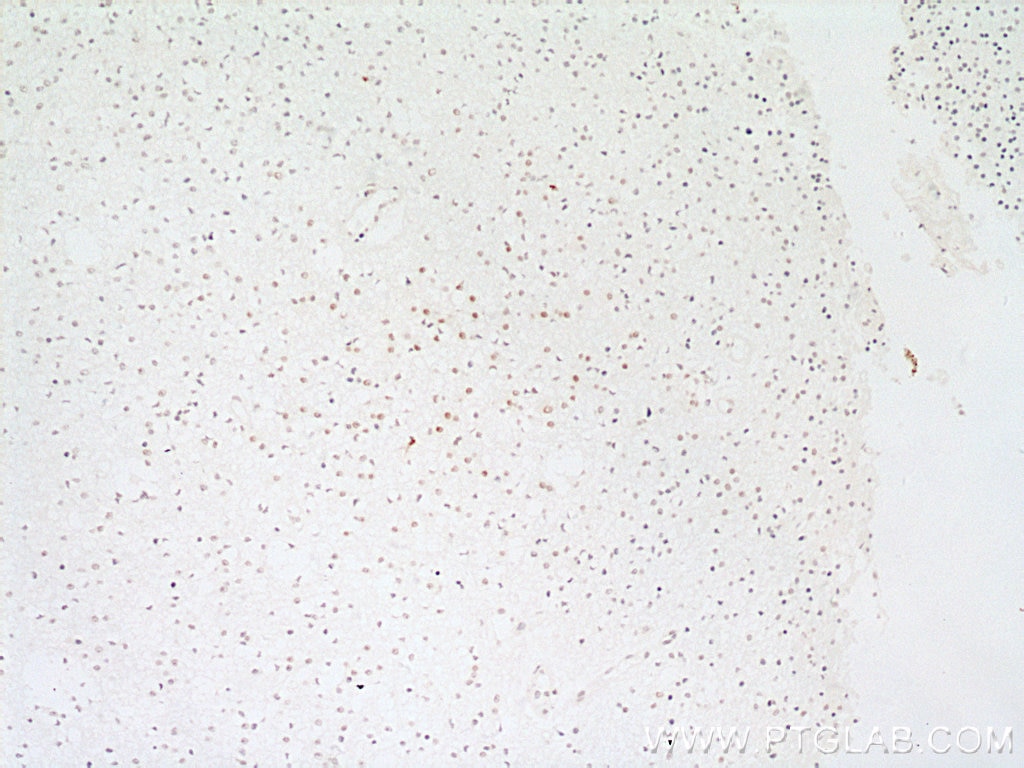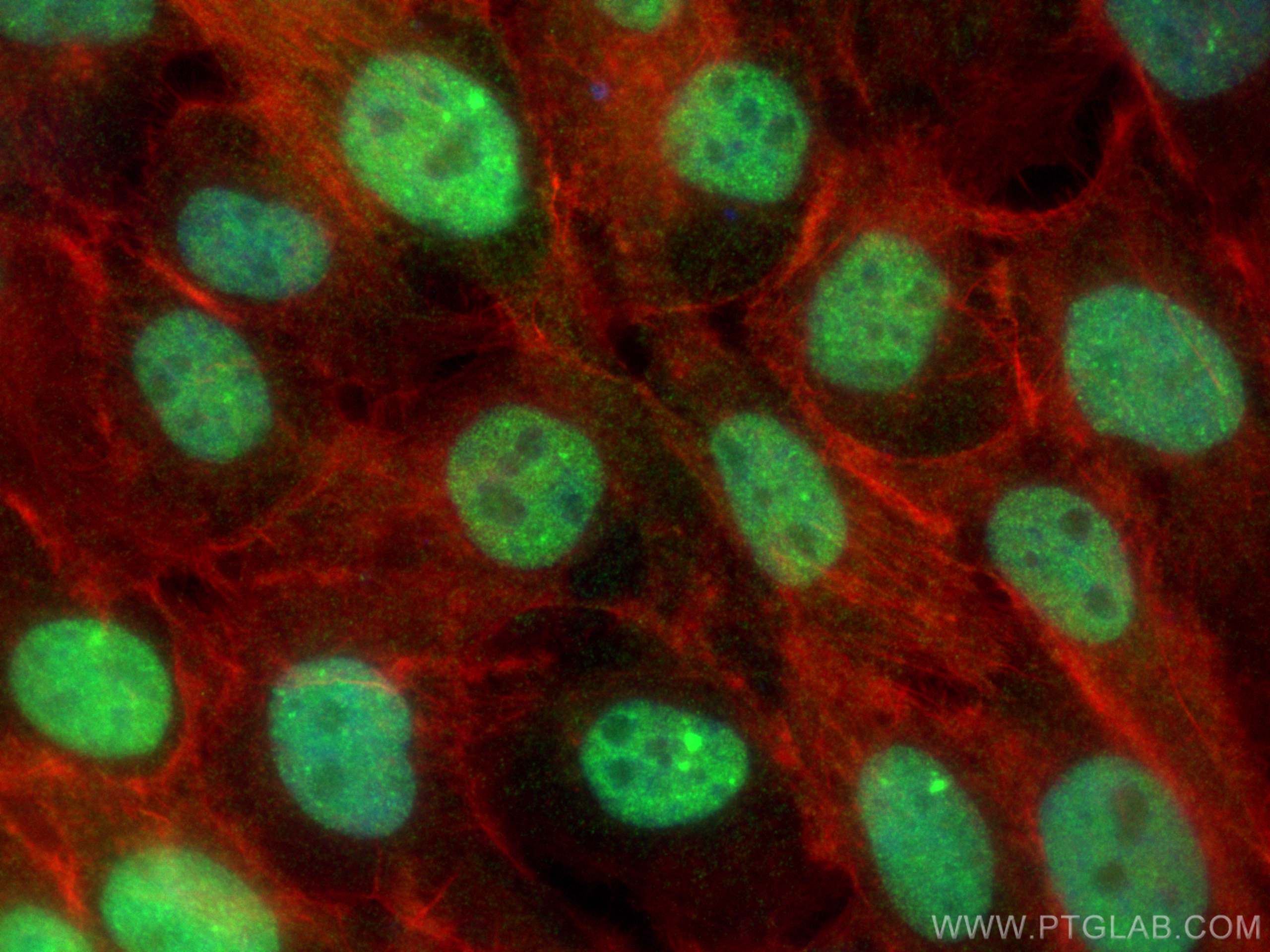- Phare
- Validé par KD/KO
Anticorps Polyclonal de lapin anti-RPA2
RPA2 Polyclonal Antibody for WB, IHC, IF/ICC, IP, ELISA
Hôte / Isotype
Lapin / IgG
Réactivité testée
Humain, rat, souris
Applications
WB, IHC, IF/ICC, IP, ChIP, ELISA
Conjugaison
Non conjugué
N° de cat : 10412-1-AP
Synonymes
Galerie de données de validation
Applications testées
| Résultats positifs en WB | cellules HEK-293, cellules HeLa, cellules SH-SY5Y, tissu cérébral de souris |
| Résultats positifs en IP | tissu rénal de souris |
| Résultats positifs en IHC | tissu de gliome humain, il est suggéré de démasquer l'antigène avec un tampon de TE buffer pH 9.0; (*) À défaut, 'le démasquage de l'antigène peut être 'effectué avec un tampon citrate pH 6,0. |
| Résultats positifs en IF/ICC | cellules A431, |
Dilution recommandée
| Application | Dilution |
|---|---|
| Western Blot (WB) | WB : 1:1000-1:6000 |
| Immunoprécipitation (IP) | IP : 0.5-4.0 ug for 1.0-3.0 mg of total protein lysate |
| Immunohistochimie (IHC) | IHC : 1:20-1:200 |
| Immunofluorescence (IF)/ICC | IF/ICC : 1:50-1:500 |
| It is recommended that this reagent should be titrated in each testing system to obtain optimal results. | |
| Sample-dependent, check data in validation data gallery | |
Applications publiées
| KD/KO | See 1 publications below |
| WB | See 16 publications below |
| IHC | See 1 publications below |
| IF | See 8 publications below |
| IP | See 2 publications below |
| ChIP | See 1 publications below |
Informations sur le produit
10412-1-AP cible RPA2 dans les applications de WB, IHC, IF/ICC, IP, ChIP, ELISA et montre une réactivité avec des échantillons Humain, rat, souris
| Réactivité | Humain, rat, souris |
| Réactivité citée | Humain, souris |
| Hôte / Isotype | Lapin / IgG |
| Clonalité | Polyclonal |
| Type | Anticorps |
| Immunogène | RPA2 Protéine recombinante Ag0690 |
| Nom complet | replication protein A2, 32kDa |
| Masse moléculaire calculée | 29 kDa |
| Poids moléculaire observé | 32 kDa |
| Numéro d’acquisition GenBank | BC001630 |
| Symbole du gène | RPA2 |
| Identification du gène (NCBI) | 6118 |
| Conjugaison | Non conjugué |
| Forme | Liquide |
| Méthode de purification | Purification par affinité contre l'antigène |
| Tampon de stockage | PBS with 0.02% sodium azide and 50% glycerol |
| Conditions de stockage | Stocker à -20°C. Stable pendant un an après l'expédition. L'aliquotage n'est pas nécessaire pour le stockage à -20oC Les 20ul contiennent 0,1% de BSA. |
Informations générales
RPA2, a subunit of the heterotrimeric replication protein A (RPA) complex, is overexpressed in various cancers. RPA2 is a major target for upstream kinases, including CDKs and the three PIKKs (ATR, ataxia-telangiectasia mutated [ATM], and DNA-PK). RPA2 comprises multiple critical Ser/Tr residues that are phosphorylated in sequential order in response to genotoxic stress.
Protocole
| Product Specific Protocols | |
|---|---|
| WB protocol for RPA2 antibody 10412-1-AP | Download protocol |
| IHC protocol for RPA2 antibody 10412-1-AP | Download protocol |
| IF protocol for RPA2 antibody 10412-1-AP | Download protocol |
| IP protocol for RPA2 antibody 10412-1-AP | Download protocol |
| Standard Protocols | |
|---|---|
| Click here to view our Standard Protocols |
Publications
| Species | Application | Title |
|---|---|---|
Drug Resist Updat Targeting NAT10 attenuates homologous recombination via destabilizing DNA:RNA hybrids and overcomes PARP inhibitor resistance in cancers | ||
Sci Transl Med Guanosine diphosphate-mannose suppresses homologous recombination repair and potentiates antitumor immunity in triple-negative breast cancer | ||
Mol Cell A PARylation-phosphorylation cascade promotes TOPBP1 loading and RPA-RAD51 exchange in homologous recombination.
| ||
Mol Cell C1QBP Promotes Homologous Recombination by Stabilizing MRE11 and Controlling the Assembly and Activation of MRE11/RAD50/NBS1 Complex. | ||
Nat Commun Crosstalk between SUMOylation and ubiquitylation controls DNA end resection by maintaining MRE11 homeostasis on chromatin | ||
Cancer Lett Disrupting PHF8-TOPBP1 connection elicits a breast tumor-specific vulnerability to chemotherapeutics. |
